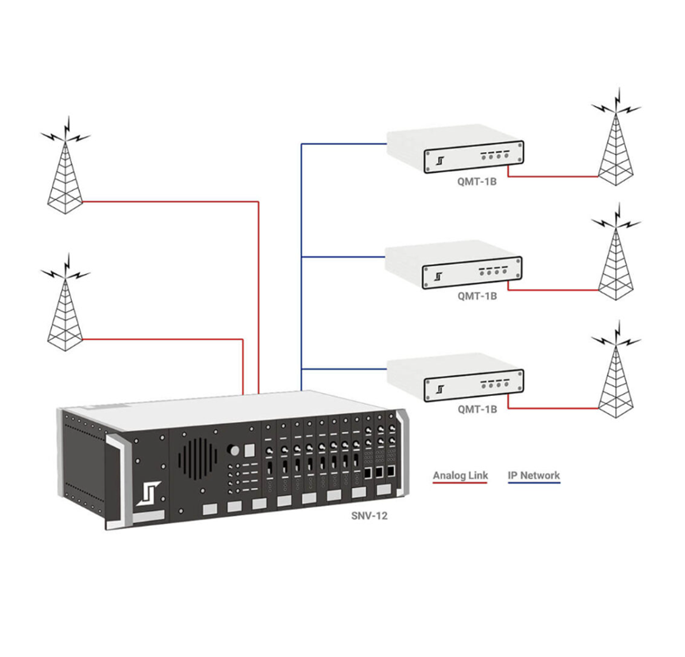Description
SIGNAL-AND-NOISE VOTER COMPARATOR
Analog and IP Backhaul in the Same Chassis
The SNV-12 Signal-and-Noise Voter accesses and analyzes backhaul audio from receiver/transceiver sites that use traditional analog backhaul such as leased lines, and also from receiver/transceiver sites that use IP backhaul methods such as a private network or IP microwave. The 64Kbps vocoder for IP backhaul ensures the delivery of clear, high-quality audio.
The SNV-12 votes the highest quality audio by analyzing the audio signals, regardless of backhaul method. In order to do this, when IP backhaul is used, the QMT-1B remote is co-located with the radio at the receiver/transceiver site. The QMT-1B provides timing information, digitizes the audio, and sends it to the SVM-3 module channel it is associated with on the SNV-12.
Greater Talk Back Range
A typical SNV-12 Signal-and-Noise Voter application is an LMR system in which mobiles and portables can hear a repeater, but the repeater can’t hear them, due to their lower transmit power and/or the antenna size or placement.
Remote receivers can be positioned in the communications dead spots, with audio from each receiver linked to the voter via IP or T1 microwave, IP fiber, landline, twisted pair, RF link, or fiber optics. The voter will select the best quality signal from all unsquelched remote receivers and forward this signal to the repeater for rebroadcast or monitor by a dispatcher, thus providing greater talk back range for the radios.



